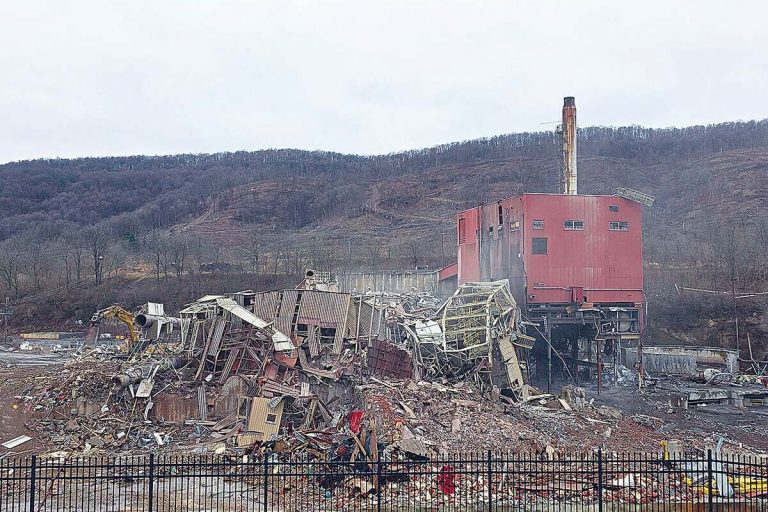
LITTLE VALLEY — It will be at last six months before the open-air demolition of the main plant process building will begin at the West Valley Demonstration Project.
Officials from CHBWV, the contractor involved in the cleanup at the nuclear cleanup site in Ashford, briefed Cattaraugus County lawmakers on the planned demolition on Wednesday.
The main plant process building is where the reprocessing of spent nuclear fuel was conducted by the former Nuclear Fuel Services company from the mid-1960s until 1972 when it closed.
In his presentation to county lawmakers, John Rendall, general manager and president of CHBWV, said COVID-19 restrictions have slowed work at the main plant process building, the largest and one of the last buildings remaining at the WVDP site.
About 2% of the radiological and other contaminants remain in the five-story, 350,000-square-foot concrete structure built in the 1960s.
Crews in the past 20 years have already removed a significant amount of materials, including highly-contaminated equipment. Rendall said more than 7 miles of contaminated piping and 50 tons of contaminated equipment have been removed from the building and shipped off-site. Contaminated equipment and materials inside the plant have been shipped off-site to licensed facilities in Utah and Texas, he said.
Only about 2% of the radiological contamination remains in the buildings, Rendall said. Some of that radioactivity is contained below the surface of concrete walls. Rendall said there are plans to use water to spray down areas during the demolition to prevent the spread of contaminated dust.
There will be monitors in the cab of the special excavator that will be demolishing the building, on the ground at the site and at the perimeter of the WVDP site.
West Valley residents and members of the West Valley Citizens Task Force have expressed concerns about the open air demolition of the main plant process building. Demolition of the main plant process building will address issues learned during the demolition in 2018 of the adjacent vitrification building, where liquid radioactive waste was mixed with glass.
Rendall said by removing as much contaminated material as possible from the main plant process building, CHBWV estimates the dust level will be 200 times below the EPA open demolition standards. “We are confident that with the work done over the last two decades” we’ll be able to do the demolition work safely, he said. “If we see issues develop, we will stop operations.”
The company, Department of Energy and New York State Energy Research and Development Authority are “taking a methodical approach to this demolition. We know exactly what we will be doing.” The goals are simple: prevent exposure to employees and protect the environment. The demolition is expected to take 18 months to complete.
Rendall said an estimated 4 million pounds of debris from the main plant process building will be shipped off-site via rail. It’s estimated the 21,550 tons of debris from the building will take 1,437 rail shipments to remove.
CHBWV is under contract to remove the main plant process building down to its ground-level slab. Removal of below-ground structures and clean-up of contaminated soil from a strontium leak that occurred in the 1960s will be done in a subsequent contract. Rendall said it will be important to remove the waste from the demolition site and get it shipped out quickly by rail.
The demolition will proceed without an enclosure over the building, which had been considered earlier in the planning. “It would be a very large facility” to enclose the main plant, said Rendall, who likened it to the size of the Buffalo Bills practice facility and would be very expensive.
(Contact reporter Rick Miller at rm*****@**************ld.com. Follow him on Twitter, @RMillerOTH)




